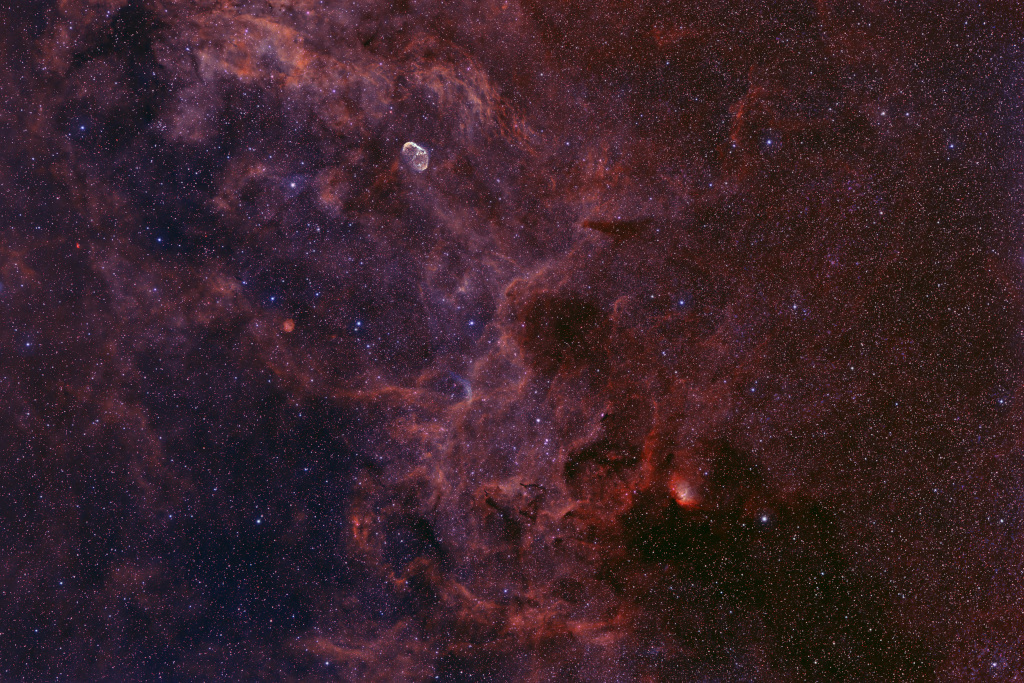2022年6月9日
Cosmic Clouds in Cygnus
Image Credit & Copyright: Wolfgang Zimmermann
Explanation: These cosmic clouds of gas and dust drift through rich star fields along the plane of our Milky Way Galaxy toward the high flying constellation Cygnus. They’re too faint to be seen with the unaided eye though, even on a clear, dark night. Image data from a camera and telephoto lens using narrowband filters was used to construct this 10 degree wide field of view. The deep mosaic reveals a region that includes star forming dust clouds seen in silhouette against the characteristic glow of atomic hydrogen and oxygen gas. NGC 6888 is the standout emission nebula near the top. Blown by winds from an massive Wolf-Rayet star it’s about 25 light-years across and known as the Crescent Nebula. A faint bluish curl just below center in the frame is also the signature of a Wolf-Rayet star. Burning fuel at a prodigious rate and near the end of their stellar lives, both stars will ultimately go out with a bang in a spectacular supernova explosion. Toward the right, a massive, young O type star powers the glow of Sh2-101, the Tulip Nebula.
Tomorrow’s picture: pixels in space
天鹅座的宇宙云
影像提供与版权: Wolfgang Zimmermann
说明: 这些气体与尘埃云,漂流在银河盘面天鹅座方向的富星野里。不过纵然在漆黑清朗的夜晚,它们还是过于昏暗肉眼不得见。上面这片宽10度的视野,建构自配备窄波段滤镜的相机和长焦镜头所记录的影像数据。这幅深空组合影像所呈现的此区景观,包括以发出原子氢和氧特征辉光的云气为背景之剪影状恒星形成尘埃云。其中,最吸睛的是位在影像顶缘附近的发射星云NGC 6888。宽约25光年亦名为NGC 6888的眉月星云,是个由大质量沃夫-瑞叶型恒星之恒星风所吹出的气壳云。影像中下方的暗淡泛蓝光弧,为另一颗沃夫-瑞叶型恒星所造成的特征天体。以惊人速率消耗核燃料,处在它们生命的终点附近的这二颗恒星,最后会以壮观的超新星爆炸谢幕。此外在影像右侧,还可见到因大质量年轻O型星之驱动而发光的Sh2-101(郁金香星云)。
明日的图片: pixels in space



